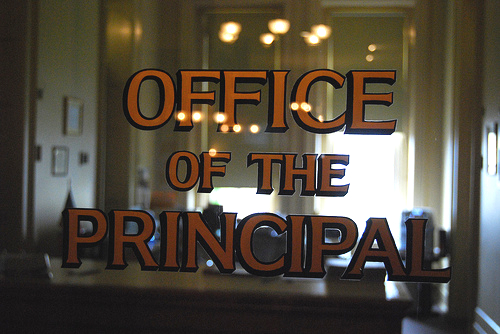 The role of school principals has transformed dramatically in recent decades, according to a new report published by the Wallace Foundation. Titled “The School Principal as Leader: Guiding Schools to Better Teaching and Learning,” the report argues that the nation’s principals are no longer just supervisors of “buses, boilers and books.” Principals are now learning-leaders with duties far beyond simply enforcing school district policies and regulations.
The role of school principals has transformed dramatically in recent decades, according to a new report published by the Wallace Foundation. Titled “The School Principal as Leader: Guiding Schools to Better Teaching and Learning,” the report argues that the nation’s principals are no longer just supervisors of “buses, boilers and books.” Principals are now learning-leaders with duties far beyond simply enforcing school district policies and regulations.
“Education research shows that most school variables, considered separately, have at most small effects on learning,” the publication reads. “The real payoff comes when individual variables combine to reach critical mass.”
Creating conditions for those variables to come together, the report states, is now a job most frequently entrusted with the nation’s principals. According to the report, principals generally succeed when they implement a series of five practices: shape visions of student academic success, create hospitable education climates, cultivate leadership, improve instruction and skillfully manage people, processes and data.
All five tasks need to be carried out to ensure school success, the report states.
“It’s hard to carry out a vision of student success, for example, if the school climate is characterized by student disengagement, or teachers don’t know what instructional methods work best for their students or test data are clumsily analyzed,” the report reads.
According to the authors of the report, a decade ago, “school leadership” was a topic usually absent from school agendas. Now, improving school leadership is one of the highest-ranking school priorities across the nation, with a 2010 Wallace Foundation survey of school administrators declaring “principal leadership” to be the second most important public education issue in the United States. Second only to teacher quality in overall importance, the survey found that steady leadership in schools was considered a more pressing public education issue than student testing, improving STEM education and even decreasing dropout rates.
The report concluded by offering advice on creating a pipeline to combat high turnover rates for leadership positions — a phenomenon commonly referred to as “churn and burn.”
By hiring selectively, giving principals on-the-job supports, providing training for aspiring education leaders and creating clearly defined job requirements for principals and vice principals, the authors of the report believe that a steady supply of well-versed leaders can be produced — an outcome with particularly positive implications for schools that are faltering academically or experiencing other organizational difficulties.
Photo courtesy of Flickr user ecastro.





























